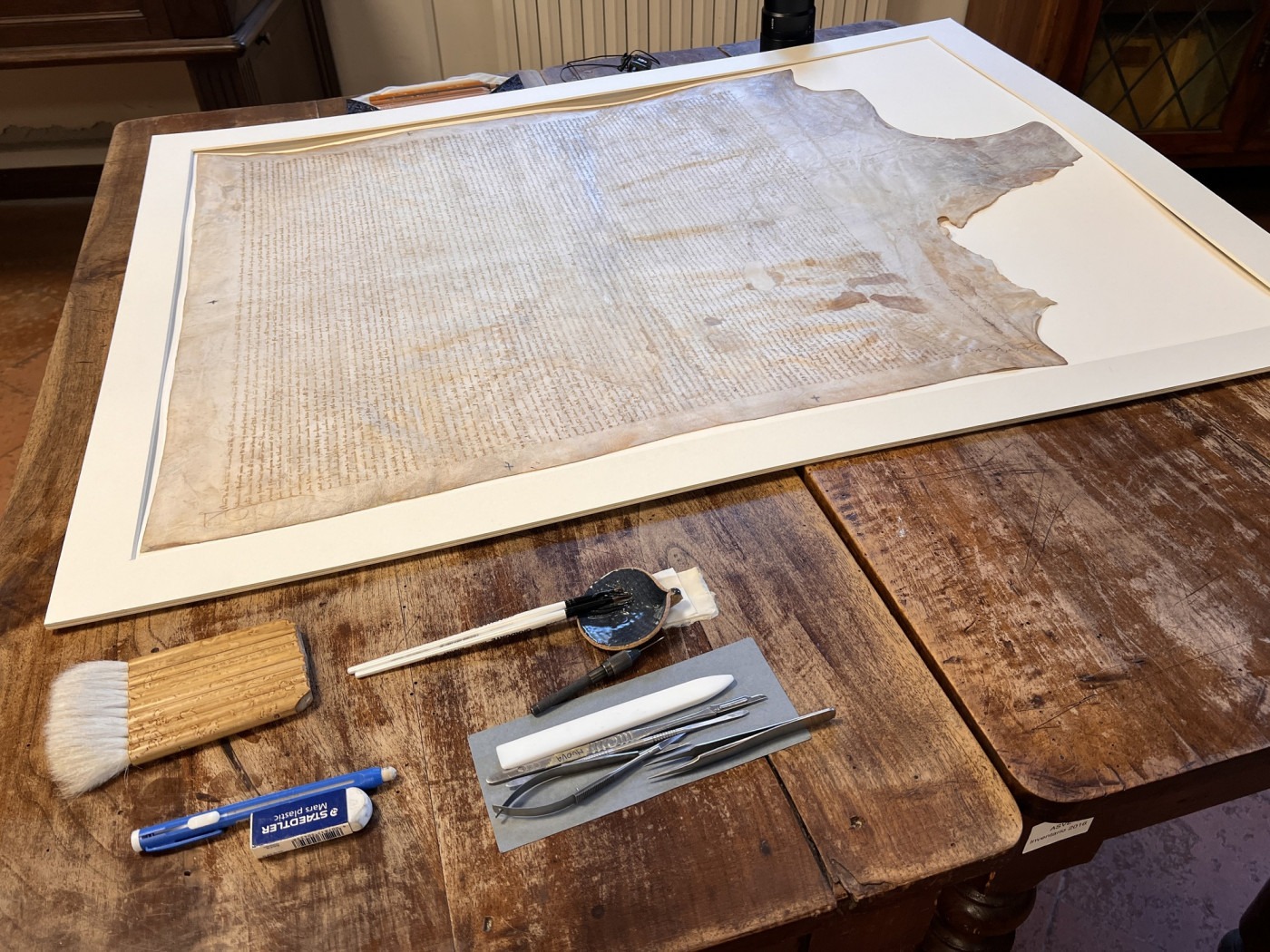Venetian parchment restored by Warwick researchers signals University’s continued global collaboration
The restoration of a 700-year-old Venetian parchment by researchers at Warwick’s Venice Centre has been hailed as a “unique historical” moment, documenting the interconnectivity of Europe and Asia during the medieval period.
The parchment, which had been lost for over 70 years, was unveiled in a special presentation at the Venice State Archives on 10 December.
Dated to 1338, the document records the journey of six Venetian merchants who followed in the footsteps of Marco Polo into Asia, along the Silk Road.
As well as documenting the journey that the merchants took to the Sultanate of Delhi, the text also details their funding and economic ventures. The restoration revealed that the journey was funded by an early example of crowdfunding, from small donations by individuals, including women. It also details the earliest proof of a mechanical clock being taken to Asia.
Prior to its rediscovery, the text had only been passingly mentioned in a short article in 1954, which was written during the celebrations of the 700th anniversary of Marco Polo’s birth.
The parchment is a unique window into the active trade routes that brought East and West together in the 13th to 15th centuries
Professor Luca Mola, Director of the Warwick Venice Centre
Professor Luca Mola, Director of the Warwick Venice Centre, was the person who rediscovered the document this year, which was then restored by professional restorer Luana Franceschet.
Speaking about its importance, Prof. Mola said: “The parchment is a unique window into the active trade routes that brought East and West together in the 13th to 15th centuries, and which have had a permanent impact on our respective worlds and the way we live our lives today.”
He added: “It is also a starting point and a source of inspiration for conducting new research that will enrich our knowledge of a period in history when cross-continental connections were based on the exchange of goods and know-how, with reciprocal benefits.”
The discovery has also been vaunted as an important “global cultural exchange” by the University’s Pro-Vice-Chancellor (International), Professor Michael Scott. He said that: “It speaks not only to the complexities, vibrancy and opportunities of global trade today, but also [to] the critical role of universities in facilitating global cultural exchange, collaboration and understanding in the 21st century.”
The University first opened a base of operation in Venice in 1967, only a few years after opening its main campus in Coventry
The University first opened a base of operation in Venice in 1967, only a few years after opening its main campus in Coventry. Since then, Warwick has had close ties with the Italian city, sending some History students abroad for the Autumn Term in their third year, typically with the intent of studying the Renaissance period.
In 2023, after a brief hiatus due to the Covid-19 pandemic, Warwick reopened operations in Venice, with the Venice Centre now housed in the extravagant Palazzo Guistinian Lolin, overlooking the Grand Canal.
The aim of the programme is “to champion the power, importance and impact of cultural interaction, engagement and discovery.” The parchment is both a prime example of the success achieved in the short time since the collaboration began, as well as a success of the University’s long-standing partnership with the city of Venice.
In recent years, Warwick has also championed taking a global perspective, making a great effort to push it into the academic mainstream through both the Global History and Culture Centre, and degrees focusing on a global approach to history.
Alongside collaboration with the Venetian State Archive, Warwick also partnered with 36 other universities in the Marco Polo International Programme in 2024, including Cornell, Istanbul, and the University of New South Wales.
This rediscovery is a shining example of the global perspective Warwick has advocated for, and the timing of its rediscovery could perhaps signify a good omen for the future of the department, and the understanding of the Renaissance period as a whole.

Comments